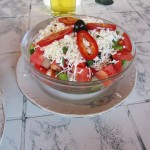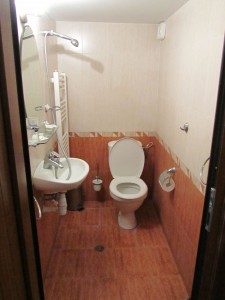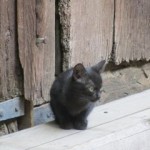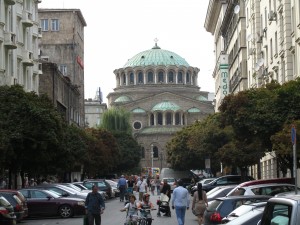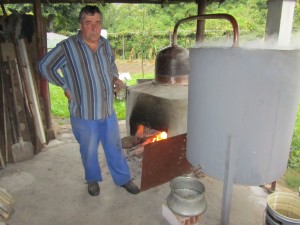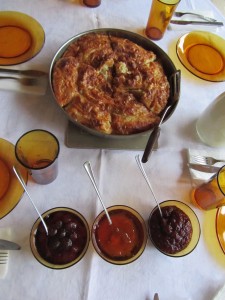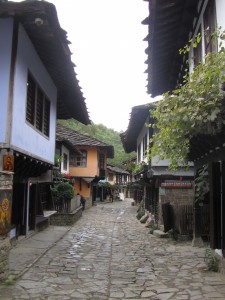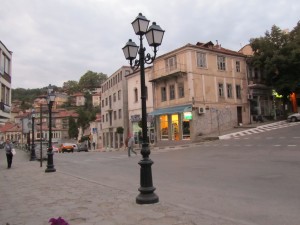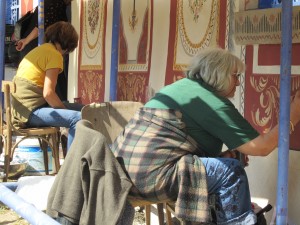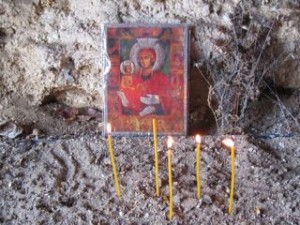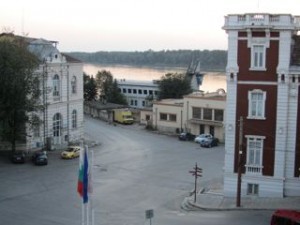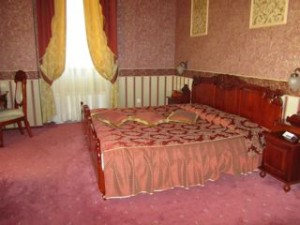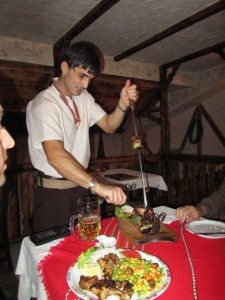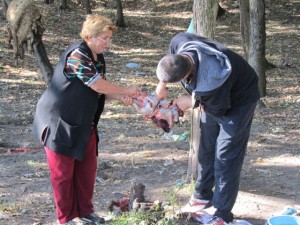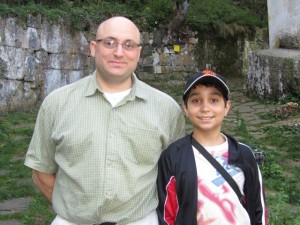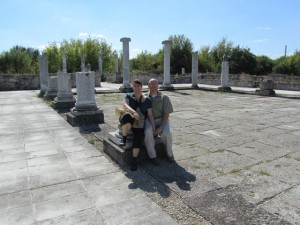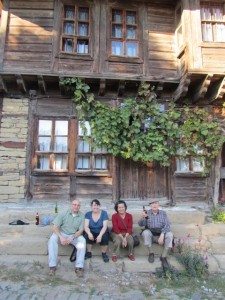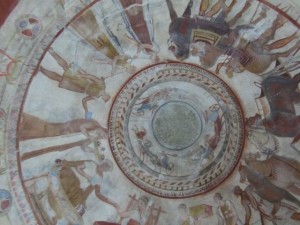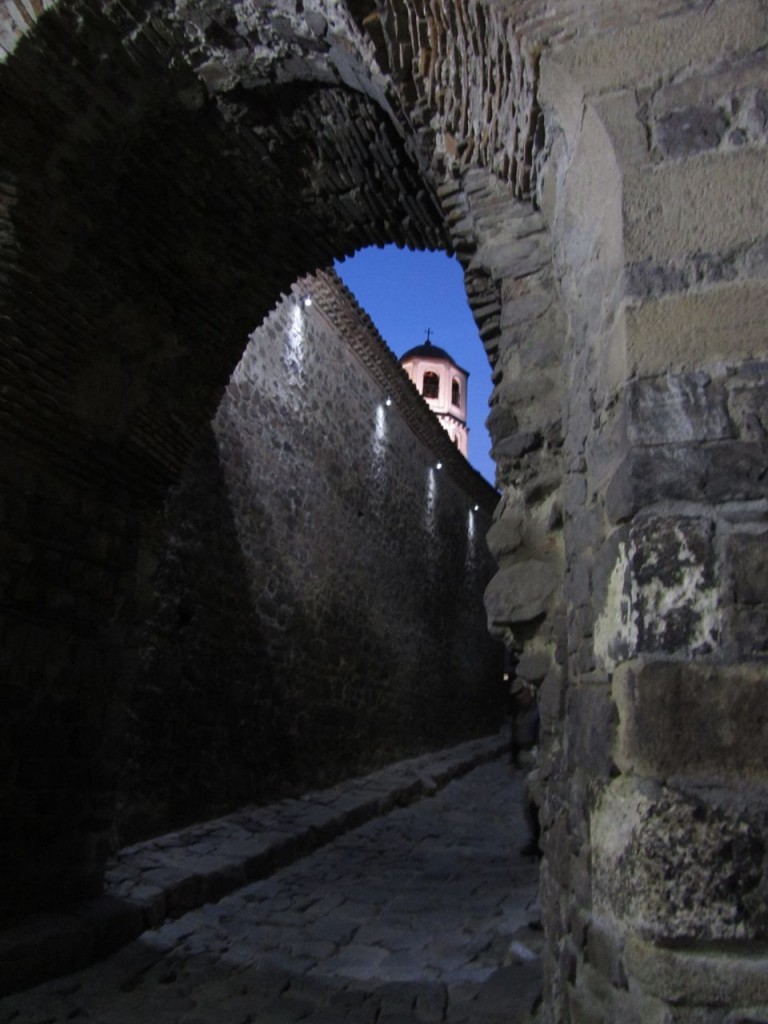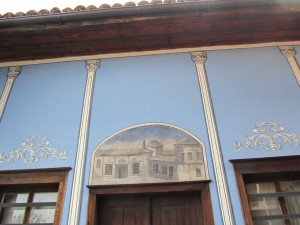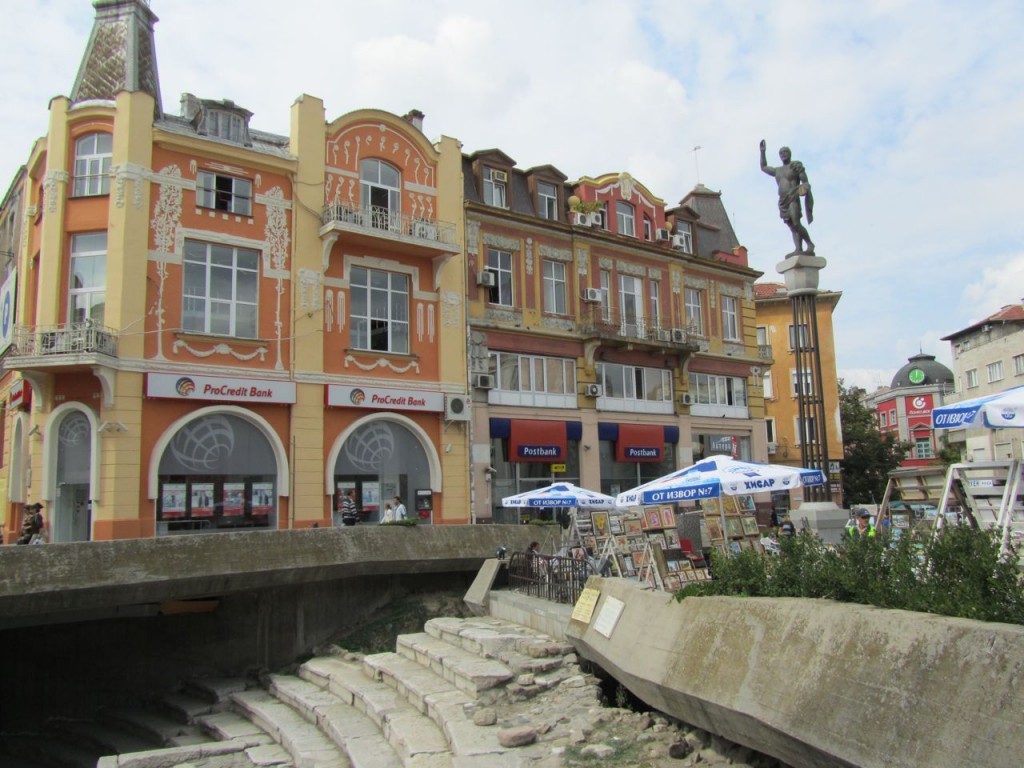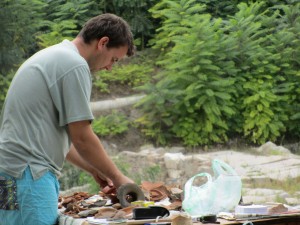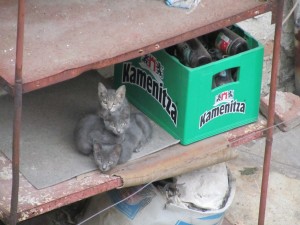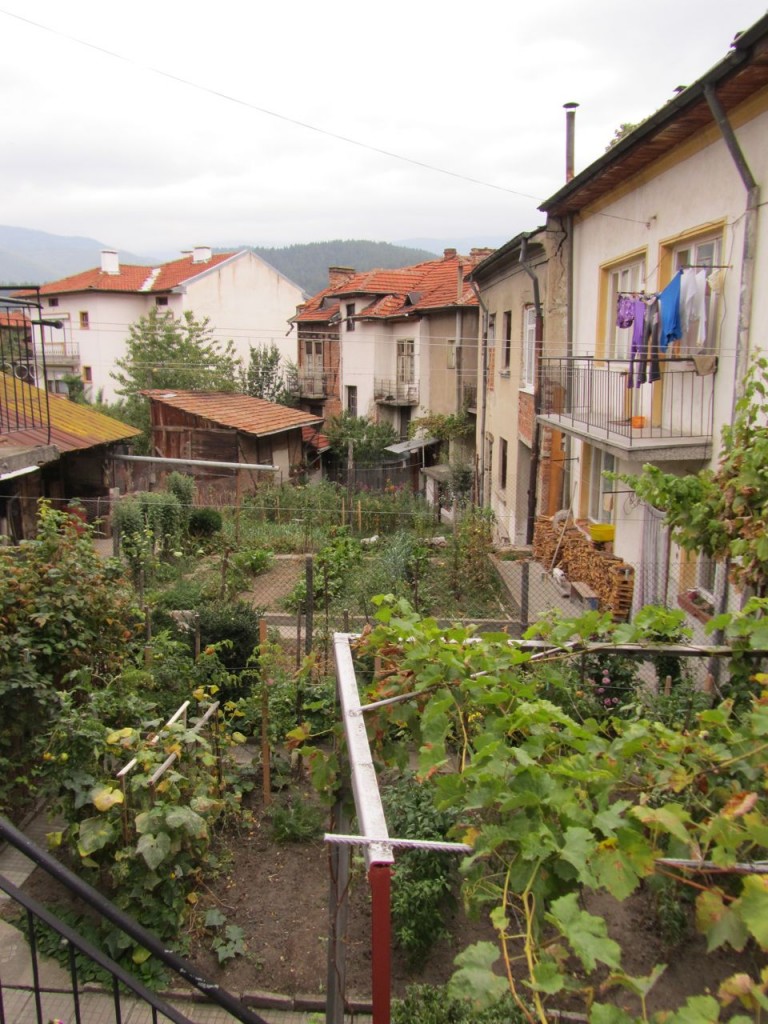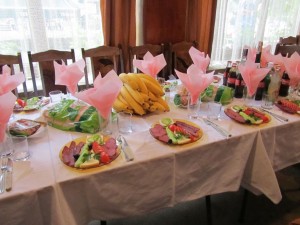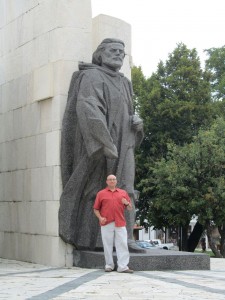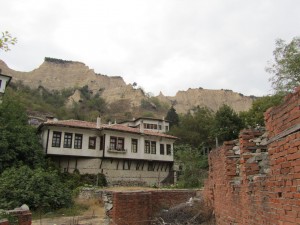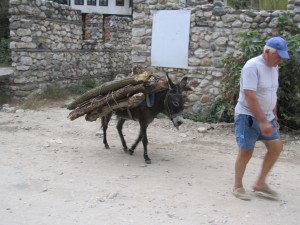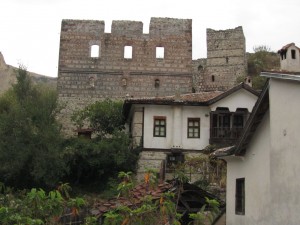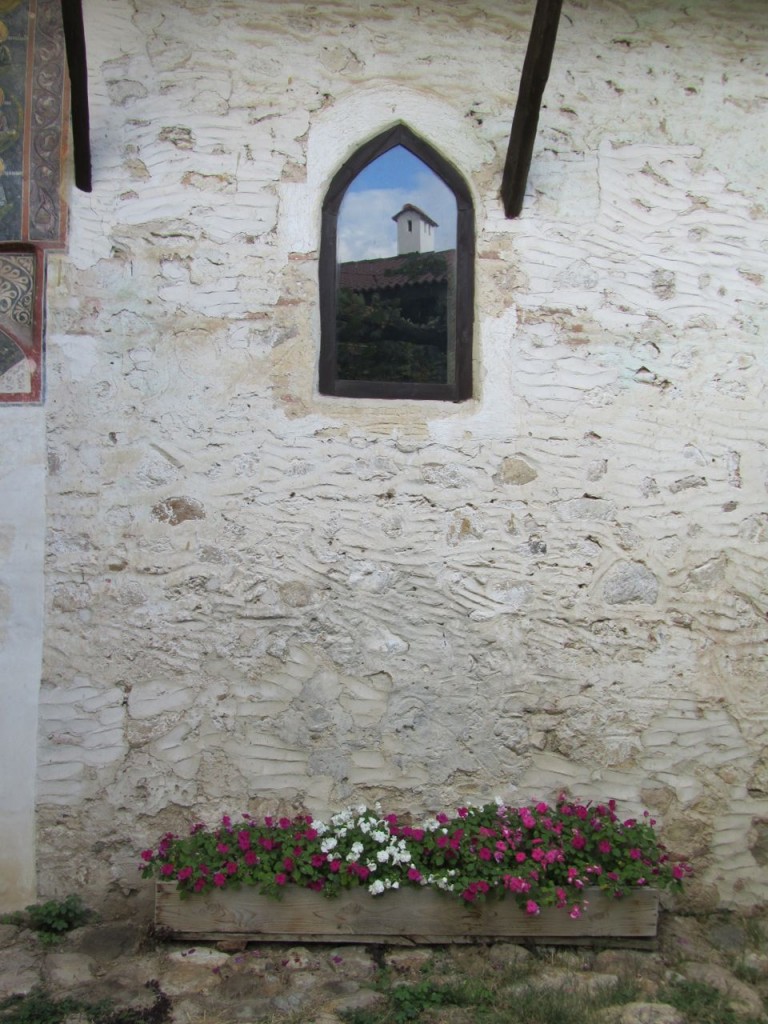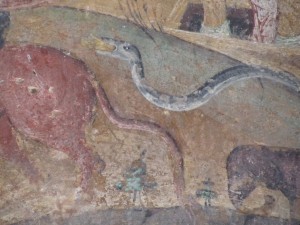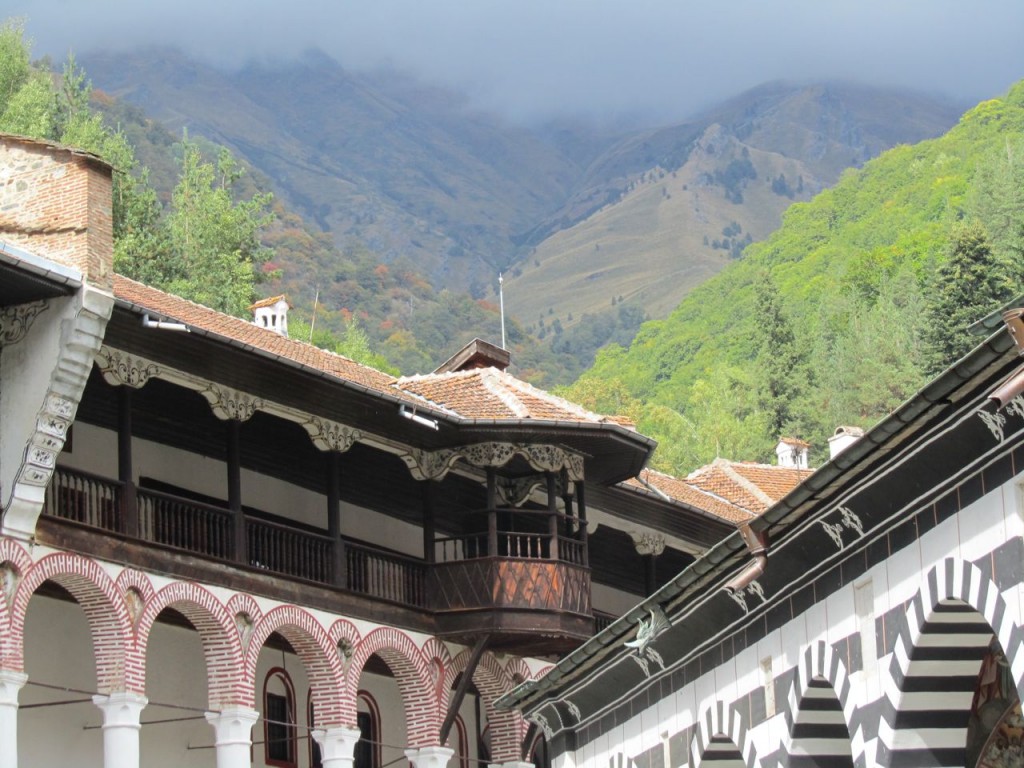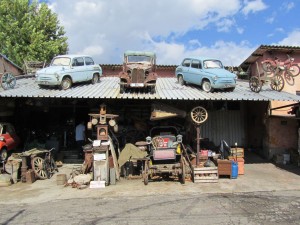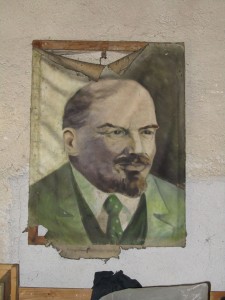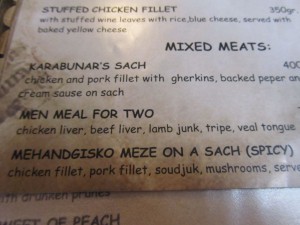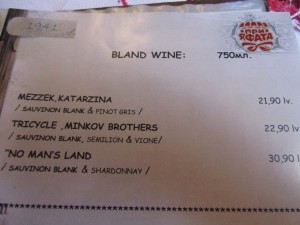Bulgaria 2010
We used the Rough Guide for Bulgaria, which was better than Lonely Planet.
Bulgaria is one of few places in Europe where it is still affordable to hire a private guide/driver. You’ll learn a lot about the country this way, make a new friend, avoid the hassle of driving, and have your arrangements made for you. Our guide was Patrick http://www.bulgariaprivateguide.com/about_me.php , just a few years younger than us, and we had a lot of laughs along the way. In Sofia we were picked up at the airport by Patrick’s friend and business partner, Victor, who gave us a city tour and took us to his excellent and centrally located apartment. He also arranges driver/transfers and car/van rentals as well as some sightseeing excursions, and we couldn’t possible recommend him more highly, see http://www.bbbulgaria.com. By using the services of Patrick and/or Victor you will see Bulgaria the Bulgarian way and will be comfortable and without worry so you can truly enjoy your vacation.
General Observations on Bulgaria (see more at the end of the trip report, too)
*People seem sincerely happy to meet you, as evidenced by their firm and enthusiastic handshakes. What a pleasure!
*The produce is wonderfully fresh, especially the tomatoes (used in their ubiquitous shopska salad)
*Don’t count on street signs. Sometimes they simply aren’t there, and outside of Sofia they are rarely in the Roman alphabet and therefore a challenge to decipher. Renting a car would be maddening.
*As uncommon as street signs are shower curtains. If you wonder what the Rough Guide means by “Bulgarian-style bathrooms,” they mean this: picture a cruise ship sized bathroom, perhaps a smidge larger, with a shower head and/or handheld shower device and a wall mount that just opens up to a drain in the floor. You must take the TP, towels, everything out of the room before showering or else it will all be drenched. They seemed completely baffled by the fact that Americans are not keen on this system. Ikea is coming to Sofia in 2011 – will it sell shower curtains??
*Check with your bank before traveling because some U.S. banks block ATM transactions in Bulgaria. You’ll get a good rate on cash exchanges in the large cities, so this is probably your best bet. It is still a cash culture. Many places will take Euros and a few will take dollars.
*People in their 40s and younger, especially in cities, speak quite good English and are happy to help you find your way or give you information, even stopping you in the street to ask if they can be of assistance.
*Food in restaurants comes out as it is ready. So if you order a side dish, it may come with your meal or may come sooner. Asking for it to come with the food appears to be a wasted effort.
*Bulgarians don’t tip more than 10% and often just round the bill up slightly. Waiters in tourist areas might be disappointed if you don’t tip American style, but as always it is best to stick to local ways.
*Throughout the country you will see papers posted around town as death or memorial announcements, as you see in other places in Europe and Latin America. What is different here is that commonly they are posted to announce the date 40 days after death, which is when the Orthodox believe the soul rises to Heaven.
17 September – London
Benefit of Sheraton Park Lane is its proximity to Piccadilly Arcade and Laduree, where we tried mint & anise (great), orange blossom, raspberry and our old favorite caramel. Lunch at a mediocre Italian place on Cromwell Road with a cute young Italian waiter named Fabio. Natural History Museum to enjoy the building and rest at a talk on volcanoes. Then to Victoria and Albert for Vito to see the Renaissance & Medieval Galleries while Annabella attended the excellent but cramped Grace Kelly, Style Icon exhibit.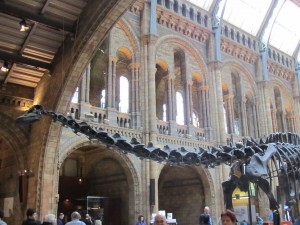
Korean dinner at the cheap and tasty Bi Bim Bap in Soho before going to see The War Horse play at the Royal Theatre Drury Lane (a small space, ideal for such a visual show), now being made into a movie by Steven Spielberg. A good WWI drama with life size puppets. Unnecessarily long, but clever.
18 September – Sofia
Victor picks us up at airport to go to Boyana Church, outside the city. In the city we visit the Greek church and Russian church. Tempted to buy “antiques” in the park, but they are mostly fakes, like the Nazi Leica cameras.
Victor’s apartment is extremely nice and comfortable, right in the center of town. Luckily there is a washing machine and a clothesline. He took us to Under the Linden Trees, where we had a feast of a meal with shopska salad, aubergine/eggplant dip (note that they use British words, like aubergine for eggplant and courgettes for zucchini), polenta, mashed nettlehead, tall bread stuffed with onions. We laughed at Dad’s “chocolate sausage” dessert, which was good.
19 September Koprivishtitza-Troyan-Oreshak
The apartment has a small kitchen, so we bought eggs and cheese and stuff from the small market on the street below. Walked around Koprivshtitza, a quaint village with cobblestone roads. Purchased pumpkin with walnuts in a jar, but it wasn’t very good. Local restaurant was busy with locals there on the weekend. HYad delicious bob, a bean soup, with grilled sausage. Our first of many French fries with sirene, a mild yellow cheese.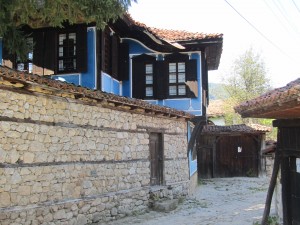
Troyan Monastery is typical Orthodox architecture with frescoes on the exterior, like we’d seen in Romania. 7 monks still live there, and it’s a UNESCO World Heritage site.
Spending the night in the village of Oreshak, at the home of Peter and Lilly, affectionately known as Papa Bear and Mama Bear. They have done up their house very nicely for guests and prepare a village feast, the highlight of which is Papa Bear’s homemade rakia, plum brandy/grappa and homemade wine. Everything is out of this world good, from the salad to the tender and tasty chicken and flavorful boiled potatotes. It’s a shame we can’t communicate better with them, but Patrick translates.
20 September Tryavna-Etara-Dyranovski Monastery
Banitsa (cheese soufflé pastry) breakfast with Mama Bear’s homemade raspberry, strawberry and peach jams is filling and wonderful. Papa Bear showed us his still and gave us a bottle of rakia to take home.
Tryavna is an old guild town with an open air folk crafts museum that is very well done. The icon making exhibit is especially interesting, and we met the icon master who works start at 80 Euros just for a small icon. There was a blackout in the town afterwards so we were limited in our food options, which eminded me of reading about taking a trip to Bulgaria in the late 1980s when it was recommended to bring a flashlight since electricity was often turned off.
Dyranovski Monastery is set in a gorge and was the site of the 1876 uprising. There is a monument for the 1976 centennial, which was interesting to think they were celebrating when we were celebrating our bicentennial and then funny because on TV that night was a vintage episode of Scooby Doo when they hunt ghosts in the Smithsonian on a bicentennial trip.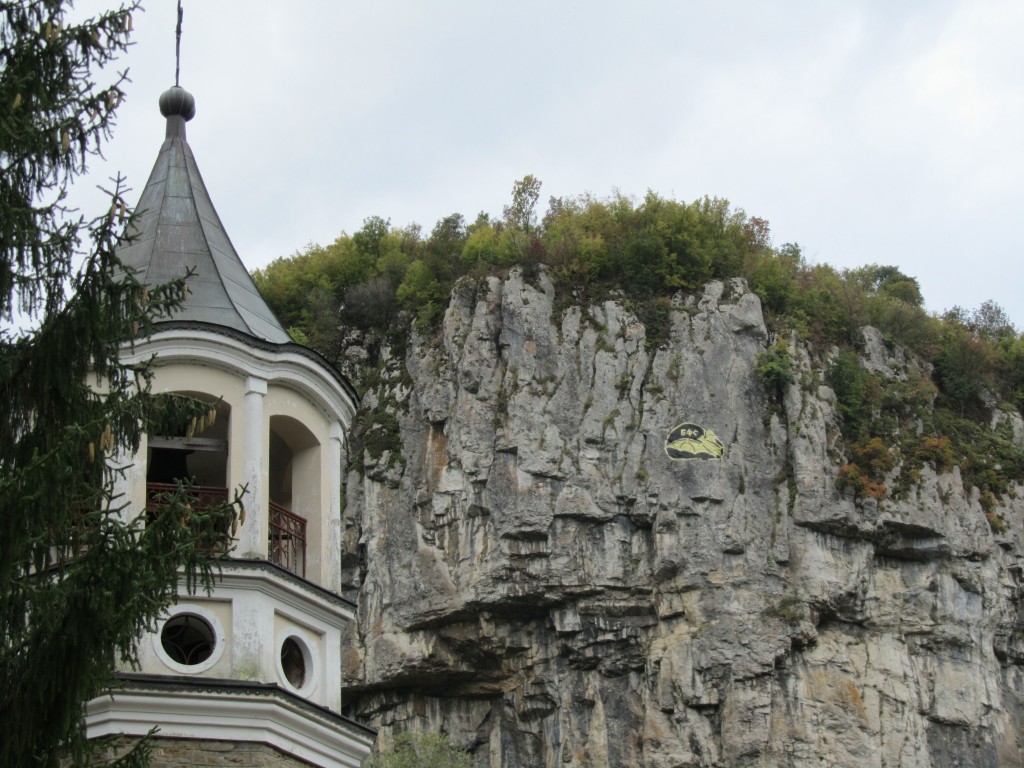
From the bridge over the river we see the outhouse that used to empty onto the river. Pilgrims were arriving for a retreat as we were leaving, and there is a fairly large hotel on the property.
Overnight at Hotel Gurko in Veliko Turnovo. Italian food for dinner at Shtastlivetsa Restaurant, with decent pizza/pasta and a little break from Bulgarian food, and good service from our waitress Geri.
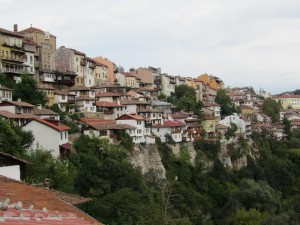
View from our balcony at the Hotel Gurko in Veliko Turnovo. Reminded us very much of our balcony view from the Alma Domus in Siena, Italy.
21 September Veliko Turnovo-Arbanasi-Ruse
Morning city tour. We walk into a local funeral for a few minutes. The casket is fully open and has that East European Dracula-like shape where the top is sort of hexagonal. The family put a candle into the hands of the deceased to light it and put flowers inside the coffin. The hearse is just a regular station wagon type of car with curtains in the windows. We didn’t want to get too close or be impolite since people were crying and there weren’t that many mourners, but it seemed like the deceased wasn’t too old. In the back of the church there were large, round breads and some other food.
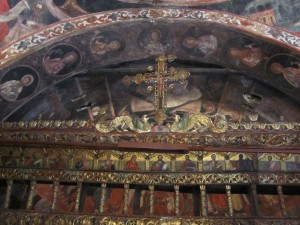
Don't bypass the Church of the Archangels Michael and Gabriel. You're likely to have it all to yourself while the crowds are falling all over each other at Church of the Nativity.
Afternoon to the village of Arbanasi. We skip the popular and bus-tour-crowded Church of the Nativity in favor of the smaller Church of the Archangels Michael and Gabriel, where we are the only visitors and can enjoy the interior in peace. Also we tour the Kostantsaliev House, a wealthy merchant’s home. Outside the city we visit the 10th century Petropavlovski Monastery (Peter and Paul) with an unusual Circle of Life frescoe. We are fortunate to see 2 artists in the process of painting restorations to the exterior.
We stopped at a roadside place for a pleasant lunch with a terrific waitress who literally ran back and forth, dispelling the Bulgarian poor service standard that Patrick refers to as “cold chips and warm beer.” We hike up the Rock Monastery of Ivanovo. Dad does a great job of a somewhat strenuous, uphill walk. Reminded us of the caves in Cappadocchia, Turkey.
We overnight in a palatial suite at the Anna Palace Hotel in the city of Ruse, just across the Danube from the Romanian border. Our balcony has a partial view of the river.
The city is a bit Stalinist, but we have an excellent dinner at The Farm restaurant. For the equivalent of 40 USD we have huge kebabs, polenta (many Romanians come shopping in Ruse, so they have their traditional mamaliga on the menu), lamb cutlets, fresh bread, assorted sides, and I have a hotch-potch (as they call it) dish of mixed mashed potato/chicken/egg/mushrooms/spices in a stone pot. I call it Bulgarian Bi Bim Bap.
22 September — Demir Babateke-Sveshtari-Abritus-Zheravna
Really interesting visit to the Muslim shrine of Demir Baba. The Ali Muslim branch of people here are very friendly and have peacefully co-existed with the Christians for centuries. They were very open to us watching and photographing them slaughter and skin a goat. Dogs are roaming around waiting for scraps.
The walk to the shrine has trees covered with cloth strips which symbolize leaving bad memories behind. We saw something like this at the ruins of a monastery in Ireland. In front of the shrine is a tiny stream, and we drink its very good and cold water. There is a series of rituals to be performed outside the shrine. We offer up a hat to the first kid to succeed in the ritual that verifies if your heart is pure, and one boy wins the hat with glee.
Unusually, in side there is an image of Ali. Otherwise it does look like the inside of a very tiny mosque.
Visit to the Thracian tomb of Sveshtari, found in 1982. It was unfinished since the king died unexpectedly and is architecturally different from other Thracian tombs. Like the Egyptians, the Thracians believed in an afterlife and buried their kings with their wives and objects needed in the afterlife.
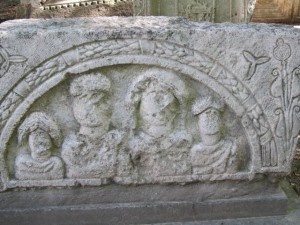
Of all the Roman ruins we've seen around the former empire, we don't ever remember seeing a family tombstone like this before.
Roman town of Abritus is a partially excavated Roman town, but unfortunately the Soviets built a pharmaceutical factor over part of the ruins. Saw many family headstones that we’ve never seen anywhere else.
On the roadside we stopped at a Bulgarian style yard sale, mostly clothes and some bikes and leaf blowers. Overnight is in the small town of Zheravna in a typical wooden house. We befriended a French couple who ended up staying in the same house and having dinner with us.
For Mom’s birthday we eat in the restaurant owned by the house owners and have a chicken with plums dish. Enjoyable conversation in multiple languages, and we had our first Bulgarian wine. Surprisingly though food is quite cheap the house wine is more expensive than in France or Italy.
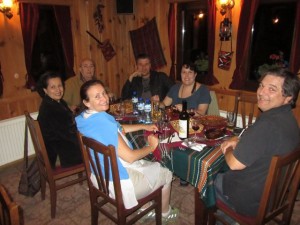
Birthday dinner with our French friends in the restaurant owned by the same owners as our Zheravna guest house.
We have breakfast there again the next morning with a type of French toast with homemade jam and also yogurt with honey and walnuts.
23 September — Kazanlak-Plovdiv
St. Nicholas Church in Zheravna had its land donated by an orphan who ended up wealthy. We left the city and visited the Thracian tomb at Kazanlak. Actually, we see an exact replica of a typical Thracian tomb (smartly they made the replica and charge a fraction of the price of seeing the actual one, which protects the original frescoes from humidity).
We travel through the country and see farms and an occasional gypsy camp. We also passed a few modern windmills. Roadside stop for brick oven pizza. Another monastery stop, and we stayed for a few minutes of a service where the monks busied themselves fussing with the candles.
Renaissance Hotel is excellent with a great shower (and door!), friendly owner/host, good restaurant, antique furniture, comfortable beds.
24 September — Plovdiv
All day exploring the charming old town of Plovdiv. Antique shops are nice but expensive. Purchased small souvenirs from a smart and funny art vendor with excellent English who told us Obama jokes. We also buy a small pen and ink drawing from another vendor. It is the annual Museums and Galleries night, so we wait until evening to enter museums because then they will be free, and we are burning out on churches and houses.
Crepe lunch is cheap and fast and pretty good. Mosaic museum in the underpass can mostly be seen from large windows. We buy plums from a small market and curse terrible American produce.
Museum night is crowded, but we go in and out of the Revival Museum, Ethnographic Museum, Icon Museum and enjoy live music, galleries, etc. The Japanese are really pushing rice crackers with cheap packets and a guy dressed as a hot dog (or a nut?).
25 September — Rhodope Mountains-MelnikOn the road through the mountains we stop at a Pomak market. The Pomaks are ethnic Bulgarians who were converted to Islam some centuries ago. Many of them are blonde, and they look slightly out of place. They’re very kind, and we buy delicious fresh strawberries in little cups for 1 Lev each and a couple of jars of jam and honey to bring home. We’re not allowed to take photos.
Wisely we opt to stop in the town of Yakoruda, where it turns out a wedding is about to take place. The proprietor of the banquet halls invites us to eat lunch there (we pay for it) and gives us a CD of his music (he also performs at the wedding).
It is a Muslim wedding, but there is nothing religious. A band parades through the streets to pick up the bride at her home, and she comes back to the town with her father and the groom on each arm and followed by the wedding party and guests. They dance in front of city hall and then they toast and break glasses on the hall steps. Really outdated hair and makeup and ghastly fashions remind us that things are still behind the times.
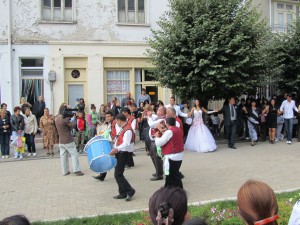
Wedding band, wedding party, and onlookers as the festivities move from the civil ceremony hall to the banquet hall.
Stop for a walk around Bansko, a British-ized ski resort but a pleasant walk. We visit a church and buy a watercolor. Pothole roads lead to the wine town of Melnik. It’s smaller than expected, but it is a really pretty setting in the mountains.
We have dinner at a restaurant with a nice waiter who let us try the Melnik Merlot and the homemade fig ice cream before buying (which we liked and bought – good business). Ate some delicious figs back at the hotel that fell off the tree onto our balcony.
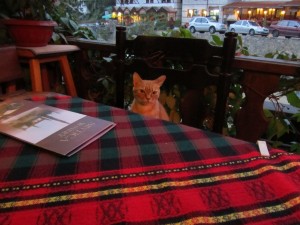
Another cat friend waiting to eat dinner with us and checking out the wine list, in English, in Melnik.
26 September — Rozhen Monastery-Rila Monastery
Rhozen Monastery is small but pleasant, a good preparation for the treasure to come. Trout lunch at a riverside restaurant.
Rila Monastery is the most visited site in Bulgaria. While it is crowded (and we’re there on a Sunday), it is beautiful and in a gorgeous mountain setting. Fascinating frescoes of the judgment day. Affordable souvenir stands and we buy a St. Elena icon for our niece, Elena. Bought fresh donuts, like fried dough. Went picture crazy since this is one of very few places we were allowed to take photos (still only from the outside).
Stop at an antique hoarder junk shop-come-museum on the road to Sofia. Cars, motorcycles, radios and incredible amounts of stuff, most of it not for sale.
Stay at Sheraton Sofia, built in the 1950s to house important Communists. Fabulous bed with great sheets and pillows, but still the shower door is only a ½ door and water still goes on the floor. Hate to leave the room.
27 September — Sofia
Refusing to pay 18 Euros for a mediocre hotel breakfast, we go out in search of food. McDonalds doesn’t do eggs (which is funny since they do have some many egg dishes). We go to Dunkin Donuts for some weird donuts and coffee. Then we buy 3 bagel-ish items from an old man selling for the equivalent of 50 cents each from a duffel bag, wisely hitting the crowds on their way to work. Must admire his entrepreneurial spirit.
MORE OBSERVATIONS AND LESSONS LEARNED
*Things we learned from our guide, Patrick, after pumping him for information as life as a child/teen under Soviet domination
*They were made to learn Russian, read Russian literature and study their history. Like other East Europeans we’ve met, there is no love lost between these people and their Russian oppressors. We made fun of Patrick all trip because he told us about the Russian penpal they made him have (we named him Boris) that was so enthusiastic to write to him but he didn’t want to bother with. Poor Boris was probably even worse off than the Bulgarian kids, coveting black market goods and hoping to be free. He probably works in a pen factory now.
*They listened to Radio Free Europe and bought black market cassettes from Western Europe. A note to all our lunatic leftist, liberal friends: The tyranny of communism is evil. To crush the dreams of anyone who aspires to anything more than the mediocrity of slugging it out in a factory day after day with no hope of anything more than the promise of socialized medicine and a one week annual holiday at some crummy seaside hotel is why such is system has never worked in the long term. It goes contrary to human nature and cannot be sustained even in the short term without stifling the personal freedoms we hold so dear. When we were children gorging ourselves on pillowcases filled with Halloween candy given out in handfuls by our stranger-neighbors the kids behind the Iron Curtain were jealously hoarding a lone Kinder Surprise egg smuggled in from West Germany at Easter. It is these types of lessons learned while traveling that make international travel and understanding so important.
*Bulgarian men are popular with Polish and Russian girls. I know I’ve heard this statement about Russian women before from Hungarian men, which doesn’t say speak highly of the abilities of Russian men. Bulgarian gigolos catering to foreign women on the Black Sea coast are known as “seagulls.”
–Many elderly people, however, miss the certainty of communism, like the guaranteed paycheck even though there was never anything worth buying.
